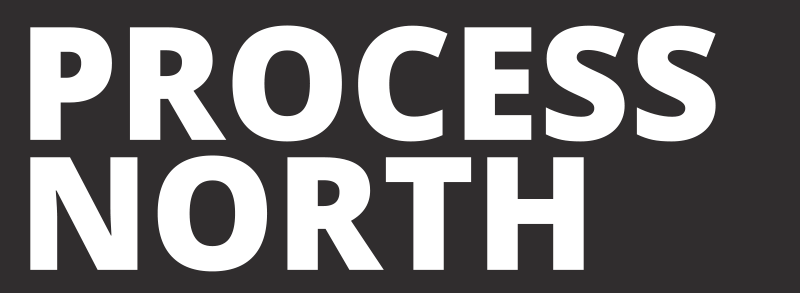Gorilla eats birthday cake
Siegfried Kracauer (edited by Jaeho Kang, Graeme Gilloch and John Abromeit), Selected Writings on Media, Propaganda and Political Communication, Columbia University Press, New York / Chichester, 2022, pp. xvii and 451.
Reviewed by Mike Makin-Waite
Different thinkers and themes in the ‘Frankfurt School’ tradition have enjoyed attention at various times. Herbert Marcuse was a celebrated New Left figure in the 1960s and 1970s: his urgent arguments about the need to address environmental destruction were highly prescient, but remain all too little heeded. The Dialectic of Enlightenment by Max Horkheimer and Theodor Adorno (1947) has been a touchstone of critical thought for several decades. More recently, Adorno’s reputation as a remarkable theorist has been consolidated by the ongoing publication of his works (including notes and transcripts of lectures) and multiple monographs about him.
Over the last few years, publishers have recovered important texts on the drivers and dynamics of authoritarian politics, including work produced as part of the 1940s Studies in Prejudice programme (1949’s Prophets of Deceit by Leo Löwenthal and Norbert Guterman, and the multi-authored The Authoritarian Personality of 1950) and Adorno’s succinct 1967 lecture on a wave of renewal of neo-Nazi activism in Germany. It’s very positive that these works are now readily available (though it’s a major problem that they are relevant and needed): they help us understand the character and dangers of right-wing extremism and the multiple current degradations of political culture. As Jeremiah Morelock and Daniel Sullivan state in a recent collection of essays, Frankfurt School works from the pre- and post-war decades offer ‘a massive, powerful, multi-dimensional, transdisciplinary collection of methodologies to aid in the ongoing struggle against authoritarianism and authoritarian populism’.
The collective term ‘Frankfurt School’ can be misleading: the academics and writers associated with it varied greatly in terms of how centrally or loosely they were involved, and for how long. There were also significant and sometimes irreducible differences of opinion between them, and these shifted over time. Their shared experience as (in the main) German Jews forced into exile by Hitler’s Nazi dictatorship opened up different trajectories: Walter Benjamin never escaped Europe, suiciding in a Spanish port to avoid the risk of being handed over to Wehrmacht murderers; Horkheimer and Adorno carried out substantial theoretical work in the USA before returning to post-war Frankfurt to re-establish the Institute for Social Research; Marcuse, along with Franz Neumann and others, stayed on in America after their wartime service for the US government.
Siegfried Kracauer was another who stayed in the States. A close friend of Adorno when young, and then a prominent journalist with the Frankfurter Zeitung and the author of an acclaimed 1930 study on white collar workers in Germany, he was uneasily involved with the Institute for Social Research during the 1930s and 1940s. This valuable selection of Kracauer’s writings begins with examples of his attempts to understand and explain the appeals and workings of fascist propaganda.
In 1936-37, whilst living in exile in France, he was commissioned by the Institute for Social Research to produce a study of the role that authoritarian ideology played in paving the way for and consolidating Hitler’s rule. The resulting piece, ‘Totalitarian Propoganda’, was not published at the time (Adorno detected ‘theoretical shortcomings’), but two out of the study’s seven sections are included here, with the quality and ongoing relevance of Kracauer’s insights underlined by a substantial and systematic appendix by John Abromeit on ‘the early Frankfurt School’s analysis of fascism as right-wing populism’. Linking some of Kracauer’s points to the challenges resulting from right-wing and racist populisms today, Abromeit reminds us that Nazi leaders ‘grasped intuitively the necessity of moving beyond a rational politics based on material interests and logical arguments to an irrational politics based on the creation of an imagined community’.
Arriving in the United States in 1941, Kracauer began working at the Museum of Modern Art in New York. Building on insights he had developed as a film critic in Weimar Germany, he analysed the techniques and motifs of Nazi newsreel films: some of the resulting texts in this book were written ‘as a direct contribution to the American war effort and to work combatting the spread of National Socialist ideas’. Kracauer noted that the Nazis used a cinematic procedure in which ‘the commentary inclines towards brevity and, for long intervals, lets the pictures explain themselves’. Comparing Nazi newsreels with American ones, Kracauer identifies different ‘methods of narration’, reckoning that the verbal commentary on Nazi products ‘does not even extend along one-third of the film’s footage, while the American [commentary] spreads over nearly its whole length’. Kracauer suggested that the Nazi methods were more effective in communicating their intended meanings, and urged the American newsreel film makers to adopt a different balance between visual elements and commentary.
More controversially, Kracauer considered the ways that American citizens were themselves susceptible to mentalities and attitudes which tended towards fascism: one expression of this in the book is material which Kracauer prepared for an intended ‘social-psychological investigation using film as an experimental device to expose latent anti-Semitism and other racist tendencies using selected American students as subjects’.
Post-war, Kracauer applied his critical attention to a range of issues, including the psychological effects of popular advertisements, the presentation of caricatured ‘national types’ in Hollywood movies, and the triviality of newsreel content: ‘sequences alternate between disasters (floods, fires) and fun (gorilla eats birthday cake)’. Nevertheless, and charitably as compared to some other critics associated with the Frankfurt school, Kracauer allowed that those making the newsreels ‘may play up or omit certain topics for political reasons, but it would be preposterous to assume that they select and manipulate their material with a view to stupefying their audience. They seem to be indolent rather than totalitarian minded’.
During the 1950s, Kracauer continued to work on government commissions. Some of his work for Columbia University’s Bureau of Applied Research sat within ‘cold war’ agendas: two resulting texts are included here, in which he evaluates the propaganda products of the Soviet Union and of eastern European governments, considering how to increase the quality and effectiveness of the ‘democratic’ propaganda being promoted by the USA and its allies to people ‘behind the iron curtain’, as well as to those who the USA feared might be influenced by communist perspectives and movements in Greece, Turkey, Lebanon, Jordan, Syria and Iran.
Some of the closing items in the book concern methodological issues: readers may anticipate that these are relatively ‘dry’ and technical. In fact, this reviewer found Kracauer’s discussion of the importance of qualitative analysis to be very stimulating – and highly relevant to current challenges in assessing political dynamics. Though acknowledging that quantitative analysis is part of an attempt ‘to establish a body of strictly objective knowledge’, Kracauer notes that this can lead to a disdain for more nuanced qualitative work. As a result, his view in the 1950s was that ‘the course our social sciences are taking leads them ever farther away from basic problems and relevant questions. In their eagerness for statistical accuracy, they lose sight of the driving powers behind our social life … their preoccupation with ever-refined breakdowns makes them disregard or even overlook anything that cannot neatly be pigeonholed … in its desire to reach the haven of statistics, [quantitative analysis] often simplifies or obscures aspects of the material’ which social science needs to understand.
Review published July 2022.
Illustration: The Cabinet of Dr. Caligari (1920) is a key work of German Expressionist cinema. Kracauer’s 1947 book From Caligari to Hitler: A psychological history of the German film built on his work as a film critic in the Weimar Republic, identifying links between the content, form and reception of films and the social dynamics which led to political catastrophe.


